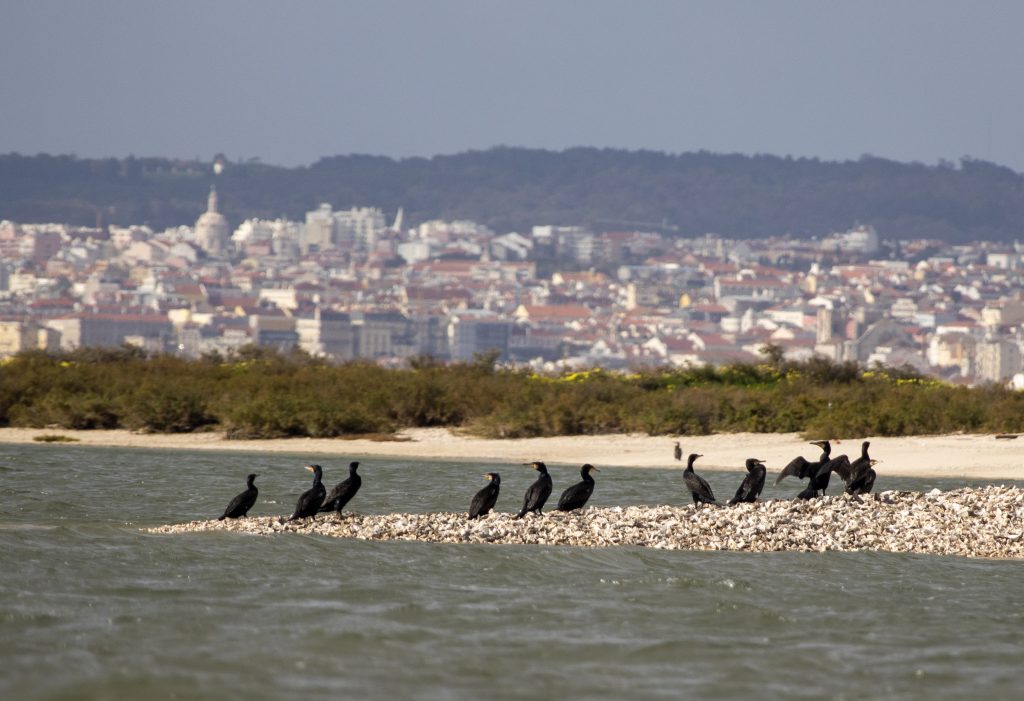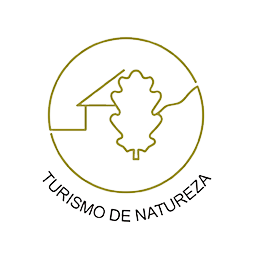Why is the Tagus Estuary so important?
Tagus Estuary Nature Reserve
Along 34 thousand ha., the Tagus Estuary is an extremely rich wetland due to the connection between fresh water from the river and the saltwater from Atlantic Ocean.

Great Cormorants with Lisbon city background
Here thousands of bird species occur as migrators, resident species, breeders and others just passing through. The aquatic fauna is extremely rich in fish, bivalves, polychaetes, invertebrates, phyto and zooplankton. Salt marshes along the shores are a clear example of the capacity of biological production, of carbon sequestration, as well as of trace metals. Besides diverse ecosystems of the Tagus Estuary, there are also man-made landscapes: Salt flats, Aquaculture basins and all the river fronts. The Estuary was in 1980, registered in the RAMSAR sites as being a wetland of international importance for birds.
In order to protect biodiversity, we have since 1976, the Tagus Estuary Natural Reserve (RNET), which aims to protect the existing habitats and species. Given that, we promote a better knowledge to our customers, visit the surrounding cities, show the history of people and customs and the richness of biodiversity.
There is no doubt that the Tagus Estuary is one of the most important wetlands in the Iberian Peninsula.
Sidónio Paes, CEO
We contribute to the dissemination of the ecological importance of RNET, awareness and conservation of nature under the code of conduct of Nature Tourism. Our wildlife tour services in Tagus will enchant you with the richness of this wetland so close to Lisbon. Dolphins can be seen inside the Tagus Estuary.
Further on, from the mouth of the Tagus River, the immense Ocean begins. It was from Lisbon that thousands of navigators departed on simple Caravels, Galleons, ships. These adventurers set out to find new civilizations, continents, resources and wildlife.
It is in the coastal zone of continental Portugal that, in addition to the numerous effluents that flow into the Atlantic Ocean, there is the phenomenon called Upwelling, which adds essential nutrients to primary productivity and consequently providing this coastline a highly productive zone in this immense Ocean. Marine biodiversity is abundant and could be even greater if today’s civilizations pressures over the oceans weren’t so strong.
We must help to reduce these pressures through the development of tourism activities that provide greater knowledge of the marine and estuarine wildlife together with environmental education.
It is essential to pass on environmental knowledge to future generations regarding the fragility of the oceans and their resilience so that they can help reduce human pressure in the future.
Connecting people with Nature! That’s what we do at SeaEO-Tours. Check our Boat Tours and be dazzle.


